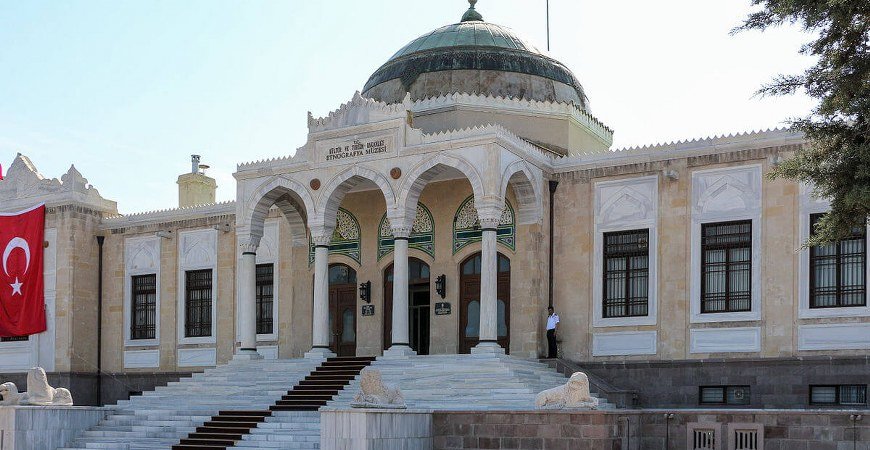
Taskinpasa Altar Niche In Ethnographic Museum of Ankara – Chapter 3
Taskinpasa Altar Niche In Ethnographic Museum of Ankara – Chapter 3,
This unknown artist made his altar niche of wood, although at this period and in the previous Anatolian Seljuk period they were usually made of tiles, stone or stucco. The magnificent altar niche in the Sahip-Ata Mosque in Konya which was built in the Seljuk period is made of tiles, as is that in the Seljuk Beyhekim Mescid. It is most regrettable that this altar niche was removed and taken to the Berlin Museum in 1907. Now it is the centerpiece in an exhibition room of its own in the Pergamon Museum in East Berlin. And the tiled niche from the Ibrahim Bey Imaret in Karaman is now in the Istanbul Tiled Pavillion Museum. A carved wooden niche is something never seen in Anatolia. The only other wooden niches known are that in the Iskodar Mosque which was built in Turkistan in the twelfth century, and three dating from the Fatimiler period which is exhibited in Cairo Museum. There are no other known examples. So the Taskinpasa altar niche is one of five in the world. Such a unique and valuable work of art could not be left in a village mosque. There was always a possibility of it being damaged by fire or stolen. So along with the pulpit, it was taken first to Kayseri Museum, and then in 1940 to An-kara Ethnographic Museum where it would be more secure. In 1965 it was placed in its present position. The most splendid works from mosques are the altar niches and pulpits. Artists would pour all their skill into these works, competing for one with another. The Taskinpasa Altar Niche is the foremost of the works produced in this art contest. If you want to see examples of Turkish wood craftsmanship then go to the Ethnographic Museum, and see the Taskinpasa Altar Niche.